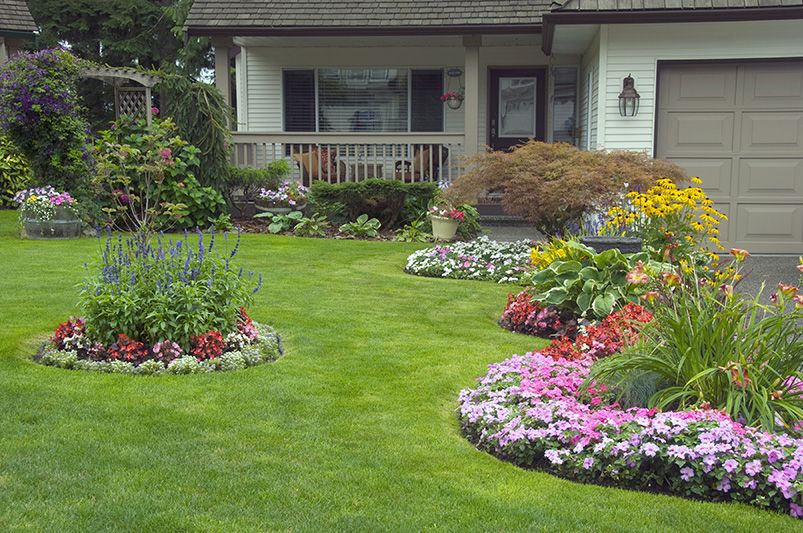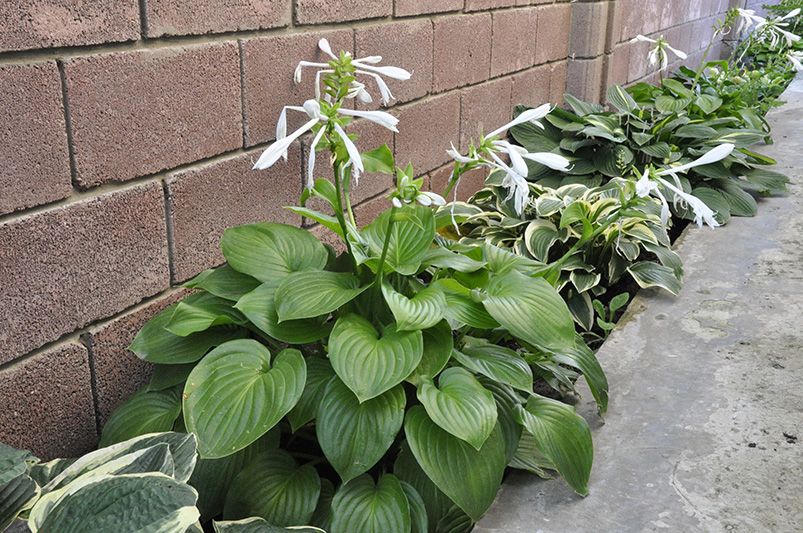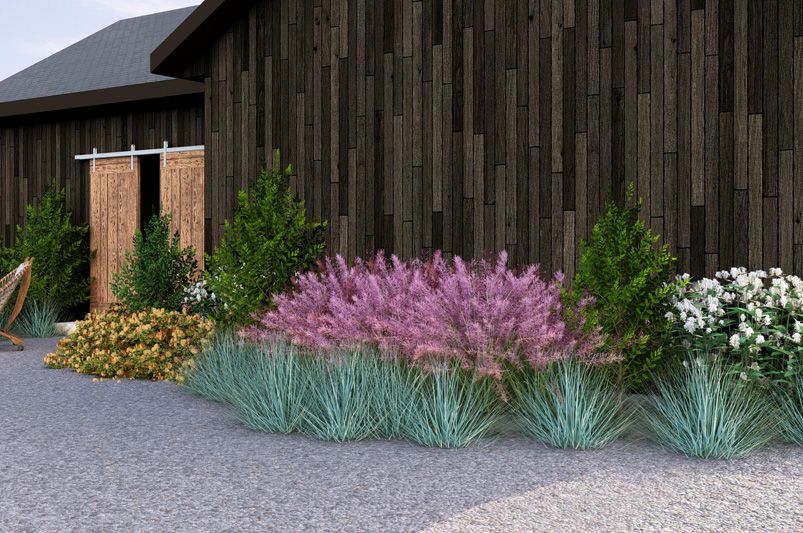
Sunny Hardy Plant Borders
Published: 09/04/2025 | Updated: 09/04/2025
Key Highlights
-
Enhance your outdoor space with vibrant plant borders that add visual appeal and structure to your garden.


-
Carefully consider factors like soil type, sunlight exposure, and color combinations when choosing plants for your borders.
-
Incorporate a mix of perennials and annuals to ensure year-round color and interest.
-
Explore design techniques like layering and contrasting foliage to create depth and texture.
-
Consider specialty gardens, such as edible or low-maintenance native plant borders, to suit your preferences and needs.
Introduction
A nice garden border can quickly improve your outdoor space. It can make your garden more colorful and beautiful. If you want to add color to walkways, mark out areas in your garden, or build a striking focal point, plant borders are a great choice. In this guide, we will look at how to create beautiful and colorful plant borders. We will cover planning, choosing plants, design tips, and unique ideas for your borders.
Planning Your Colorful Plant Borders
Before you begin planting, plan your borders well. Think about the size and shape of your garden. Look at the style of your home, and also your personal taste. Do you want a formal border with straight lines and matching plants? Or would you prefer a casual, cottage-style border that has a mix of colors and textures?
Also, think about how much time and effort you can put into maintaining it. Choosing low-maintenance plants can help you save time and work later.
Key Factors to Consider for a Vibrant Garden
When choosing plants for your borders, it is important to know your garden's conditions. First, figure out your soil type. Is it clay, loam, or sand? This detail will help you find plants that fit your garden's drainage and nutrient needs.
Next, look at how much sunlight different parts of your garden get each day. Some plants grow well in full sun, while others like partial shade or full shade. Pick plants that match the sunlight where you want to place them to help them grow strong and healthy.
Lastly, think about how long your growing season is. Choosing plants that bloom at different times will give you color in your garden all spring, summer, and fall.
How to Choose the Right Color Combinations
Choosing the right color combinations is important for making your plant borders look great. Start by thinking about a color palette that matches your home and yard. Do you want bold and bright colors, or do you prefer a soft and simple look?
For more visual interest, try using a range of colors. Warm colors like red, orange, and yellow catch the eye easily. On the other hand, cool colors like blue, purple, and green bring a feeling of calmness.
Feel free to try different color combinations to find what works best in your garden. You can also add foliage plants with colorful or varied leaves to create depth and make everything look even better.

Incorporating Perennials for Year-Round Color
Perennials are a great option for garden borders. They come back every year, bringing lasting beauty and cutting down the need for replanting. These plants have a wide range of colors, textures, and sizes. This variety makes it simple to find the right ones for your borders.
When choosing perennials, think about their bloom times. Pick a mix that will keep your garden colorful throughout the growing season.
Best Perennials for Sun-Drenched Garden Borders
For sunny garden borders, many perennials love full sun and bloom a lot. Lavender is a popular choice. Its fragrant purple spikes are elegant and attract pollinators.
Another wonderful option is the coneflower (Echinacea). It has large, daisy-like flowers that come in pink, purple, orange, and yellow. Coneflowers don't require much care and bring butterflies to your garden.
If you want something bold, Yarrow (Achillea) is ideal. It has flat clusters of small, bright flowers in yellow, orange, red, pink, and white. Yarrow can survive in drought conditions and attracts helpful insects.
Selecting Perennials for Shaded Border Areas
Creating a beautiful shade garden or shady border is easy if you choose the right plants. Hostas are a popular pick for shady spots. They have big, pretty leaves that come in different shades of green, blue, and yellow.
Ferns bring a bit of woodland feel with their fine fronds. They grow well in moist, shaded areas. You might like the Japanese painted fern or autumn fern for their special leaf colors and textures.
Bleeding heart (Dicentra) is another lovely perennial for shade. It has heart-shaped flowers that hang down from bending stems. The flowers can be pink, red, or white, adding a playful touch to your garden.

Utilizing Annuals to Fill Gaps
Perennials create a strong base for your garden borders. Annuals, on the other hand, bring a splash of color and can help fill empty spaces, especially in the first year after you plant them. These plants live for just one growing season, which means you can try out different colors and types each year.
Annuals are usually affordable and easy to find at garden centers. This makes them a great choice for gardeners of any experience level.
Top Annual Plants for a Burst of Seasonal Color
Many annuals are great for adding bright color to your garden borders during the growing season. Here are some favorites:
-
Petunias are popular because they bloom for a long time and come in many colors, like vibrant pinks and purples, or soft yellows and whites.
-
Zinnias add a happy vibe with their daisy-like flowers that are bold shades of orange, red, yellow, pink, and white.
-
Marigolds are easy to grow, with bright orange and yellow flowers that bring warmth and cheer to your borders.
Don't forget to deadhead spent blooms. This helps them produce more flowers and keeps your annuals blooming longer.
Tips for Maintaining and Rotating Annual Plants
To keep your annual plants healthy and bright, it's important to care for them well during the growing season. Make sure to water your annuals often, especially when it's dry. Adding a layer of mulch around your plants helps keep moisture in and stops weeds from growing.
For ongoing blooms, think about planting annuals in stages. You can start sowing seeds indoors in early spring or buy seedlings from your local garden center. Plant a new batch of annuals every few weeks. This way, you can enjoy flowers throughout the growing season.
Try different planting ideas each year to make your garden borders look fresh and fun. You can mix annuals with different colors or textures, or create shapes and designs in your garden.

Design Techniques for Impactful Borders
Beyond choosing plants, there are design methods to make your borders stand out and look good. One useful method is layering. This means you plant taller plants at the back, medium-height plants in the middle, and shorter plants at the front.
This way, your borders will have depth and look more interesting.
Layering Plants for Depth and Texture
Layering plants is important for adding depth and texture to garden borders. Begin by placing the tallest plants at the back. This can be shrubs, ornamental grasses, or tall perennials like coneflowers or hollyhocks.
Next, in the middle layer, add medium-height plants. Options include salvias, daylilies, or Russian sage. These plants help connect the tall plants at the back with the shorter plants in the front.
For the front of the border, select low-growing plants. Good choices are creeping phlox, lavender, or groundcovers. These plants help smooth the edges of the border and create a nice flow.
The Role of Foliage in Creating Contrast
Flowers are important, but leaves, or foliage, also matter a lot. They create contrast and make your plant borders more interesting. Think about using plants that have different leaf shapes, sizes, and textures.
For instance, you can mix large leaves, like those of hostas or ligularias, with smaller, softer leaves, like ferns or grasses. This mix of textures makes your borders more lively and attractive.
Don't forget how beautiful green leaves can be. Different shades of green, from bright yellow-green to dark green, make a great background for your flowers.

Low-Maintenance Borders with Native Plants
For anyone looking for a beautiful garden that is easy to care for, adding native plants to your borders is a great idea. Native plants fit well with the local climate and soil type. This means they can handle changes in the weather and need less water, fertilizer, and pesticides.
These plants also help local pollinators like bees and butterflies thrive. When choosing native plants, it’s important to find the right types that do well in your area and fit the growing conditions of your garden.
Look at things like sunlight, soil type, and how much moisture there is. If you pick the right plants and look after them a little, your native plant border will grow well and beautify your space for many years.
Conclusion
Elevate your outdoor space with bright plant borders that bring color and style. By choosing different perennials and annuals, you can make a vibrant garden that blooms all year. Think about layering plants for more depth and texture. Try mixing colors to create a bold look. From sun-loving perennials to easy-care native plants, there are many choices to consider. Change your outdoor area into an eye-catching work of art that draws attention and praise. Share your colorful plant borders on social media to inspire others and show off your gardening skills.
Frequently Asked Questions
What are the best plants for a low-maintenance border?
For a border that is easy to care for, choose a mix of simple shrubs, perennials that can handle drought, and groundcovers that spread. Applying mulch can help keep the soil moist and stop weeds from growing.
Looking to refresh your landscape border with stunning, eye-catching plants?
At ShrubHub, we specialize in transforming ordinary borders into vibrant, beautiful focal points. Whether you’re aiming for colorful blooms, lush greenery, or low-maintenance elegance, our landscape designers will help you choose the perfect plants tailored to your style, climate, and space. Let’s bring your vision to life—book a free consultation today and let the border become the highlight of your yard!


